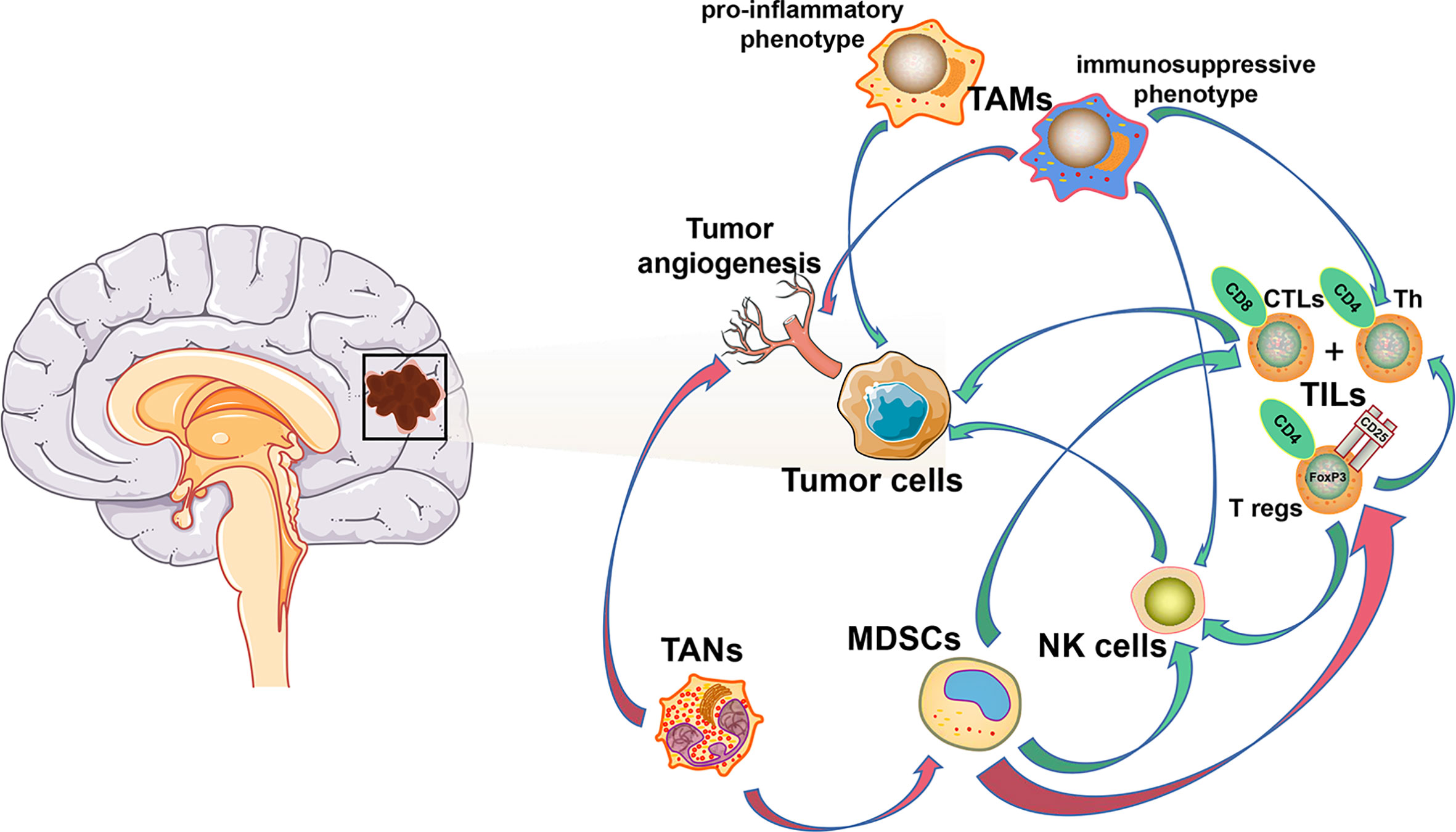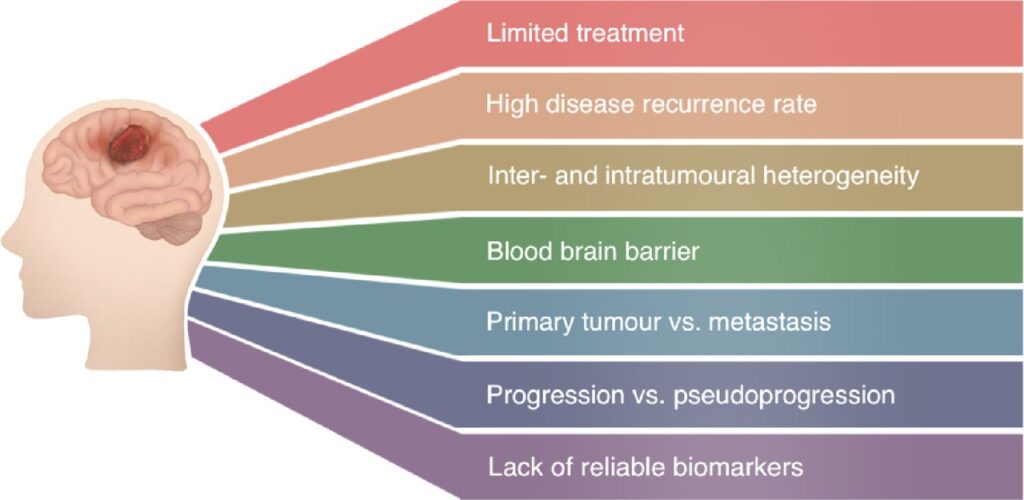A brain tumor refers to an abnormal growth of cells within the brain. Among the various types of brain tumors, gliomas are one of the most common and complex forms. Gliomas originate in the glial cells, which are supportive cells in the brain that help maintain the environment for neurons to function properly. Understanding the types, causes, symptoms, diagnosis, and treatment options for gliomas is crucial for patients, caregivers, and healthcare providers alike.

What Are Gliomas?
Gliomas are tumors that arise from glial cells, which include astrocytes, oligodendrocytes, and ependymal cells. These tumors can occur in different parts of the brain and spinal cord and vary significantly in their behavior, ranging from slow-growing benign tumors to aggressive malignant ones. The classification of gliomas depends on the specific type of glial cell involved and the grade of the tumor, which indicates how quickly it grows and spreads.
Types of Gliomas
Gliomas are categorized based on the type of glial cell they originate from and their characteristics under a microscope. Below are the primary types:
- Astrocytomas: These tumors develop from astrocytes, star-shaped glial cells that support and nourish neurons. Astrocytomas can range from low-grade to high-grade tumors.
- Oligodendrogliomas: These tumors arise from oligodendrocytes, which produce myelin, a substance that insulates nerve fibers. Oligodendrogliomas often grow slowly but can become more aggressive over time.
- Ependymomas: These tumors originate in the ependymal cells, which line the ventricles of the brain and the central canal of the spinal cord. Ependymomas can occur in both children and adults.
- Glioblastomas: This is the most aggressive and malignant form of glioma. Glioblastomas grow rapidly and are challenging to treat due to their invasive nature.
Causes of Gliomas
The exact cause of gliomas remains largely unknown. However, researchers have identified several factors that may increase the risk of developing these tumors:
- Genetic Factors: Certain inherited genetic conditions, such as neurofibromatosis and Li-Fraumeni syndrome, are associated with an increased risk of gliomas.
- Exposure to Radiation: People who have undergone radiation therapy for other medical conditions may have a higher likelihood of developing brain tumors later in life.
- Environmental Factors: Although evidence is limited, some studies suggest that exposure to certain chemicals or toxins might contribute to the development of gliomas.
- Age and Gender: Gliomas are more commonly diagnosed in adults, particularly those between the ages of forty and seventy. Men are slightly more likely than women to develop these tumors.
Symptoms of Gliomas
The symptoms of gliomas depend on the size, location, and grade of the tumor. As the tumor grows, it can press on surrounding brain tissue or disrupt normal brain function. Common symptoms include:
- Headaches: Persistent headaches, especially in the morning or accompanied by nausea and vomiting, are a frequent symptom.
- Seizures: Seizures may occur due to abnormal electrical activity caused by the tumor.
- Cognitive Changes: Patients may experience memory problems, difficulty concentrating, or changes in personality or behavior.
- Weakness or Numbness: Weakness or numbness in the arms, legs, or face may indicate pressure on specific areas of the brain.
- Vision Problems: Blurred vision, double vision, or loss of peripheral vision can result from tumors affecting the visual pathways.
- Speech Difficulties: Difficulty speaking or understanding language may occur if the tumor affects the speech centers of the brain.
Diagnosis of Gliomas
Diagnosing gliomas involves a combination of clinical evaluation, imaging studies, and sometimes surgical procedures. Early and accurate diagnosis is essential for determining the best course of treatment.
Medical History and Physical Examination
A healthcare provider will begin by taking a detailed medical history and conducting a physical examination. They will ask about symptoms, their duration, and any family history of neurological disorders.
Imaging Studies
Imaging tests play a critical role in identifying and characterizing brain tumors. The most commonly used techniques include:
- Magnetic Resonance Imaging: MRI provides detailed images of the brain and helps identify the location, size, and characteristics of the tumor.
- Computed Tomography: CT scans use X-rays to create cross-sectional images of the brain. While not as detailed as MRI, CT scans are useful for detecting bleeding or calcifications within the tumor.
Biopsy
In many cases, a biopsy is necessary to confirm the diagnosis and determine the grade of the tumor. During a biopsy, a small sample of the tumor is removed and examined under a microscope by a pathologist.
Treatment Options for Gliomas
Treatment for gliomas depends on several factors, including the type, grade, and location of the tumor, as well as the patient’s overall health. A multidisciplinary team of specialists, including neurosurgeons, oncologists, and radiation therapists, typically collaborates to develop a personalized treatment plan.
Surgery
Surgical removal of the tumor is often the first step in treating gliomas. The goal of surgery is to remove as much of the tumor as possible while preserving healthy brain tissue. In some cases, complete removal may not be feasible due to the tumor’s location or invasiveness.
Radiation Therapy
Radiation therapy uses high-energy beams to target and destroy cancer cells. It is often used after surgery to eliminate any remaining tumor cells or as a primary treatment for inoperable tumors. Advanced techniques, such as intensity-modulated radiation therapy, allow for precise targeting while minimizing damage to surrounding tissues.
Chemotherapy
Chemotherapy involves the use of drugs to kill cancer cells or stop them from growing. For gliomas, chemotherapy is frequently administered orally or intravenously. Temozolomide is a commonly used chemotherapy drug for treating glioblastomas and other high-grade gliomas.
Targeted Therapy
Targeted therapy focuses on specific molecules or pathways involved in tumor growth. This approach aims to block the signals that promote tumor development while sparing normal cells. Bevacizumab, for example, is a targeted therapy that inhibits blood vessel formation in tumors.
Immunotherapy
Immunotherapy harnesses the body’s immune system to fight cancer. While still under investigation for gliomas, immunotherapy holds promise as a potential treatment option. Vaccines and checkpoint inhibitors are among the strategies being explored in clinical trials.
Supportive Care
Managing symptoms and improving quality of life are integral components of glioma treatment. Supportive care measures may include medications to control seizures, physical therapy to address mobility issues, and counseling to help patients cope with emotional challenges.
Emerging Treatments and Research
Ongoing research continues to advance our understanding of gliomas and improve treatment outcomes. Scientists are exploring novel therapies, such as gene therapy, stem cell transplantation, and innovative drug combinations. Clinical trials offer patients access to cutting-edge treatments and contribute to the development of new standards of care.
Living with a Glioma
A glioma diagnosis can be overwhelming, but many resources are available to support patients and their families. Support groups, educational materials, and advocacy organizations provide valuable information and encouragement. Additionally, maintaining open communication with healthcare providers ensures that patients receive comprehensive care tailored to their needs.





